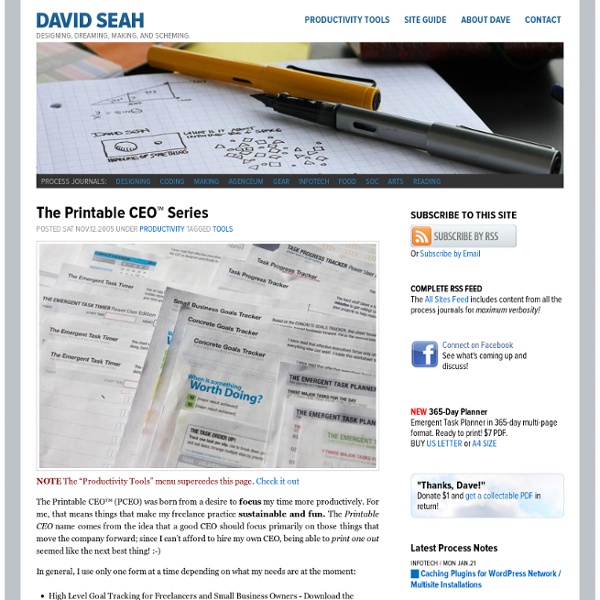Two Minute Playlists for Getting Things Done : Christopher Schmitt
November 20 Ever had a pile of quick to-do’s that ate your entire morning? I have. And I’ve found a way to combat that. If you’ve read Getting Things Done (book, wikipedia) and are into it like I am, you probably have a stack of 43 folders on your desk collecting dust. When you use the system, it works—but for the most time, my collection of 43 folders on my desk checking the folders and processing the paperwork makes a giant inbox. Chunking Short Tasks However, one part of David Allen’s GTD strategy I’ve embraced is processing short tasks in under two minutes. I chunk short tasks–essentially collecting a long list of things that contains activities that I can knock out in a small amount of time, usually less than two minutes. Instead of stopping work on a book or article, which requires more concentration than quick email reply, process some piece of postal mail, or what have you, I make a note of the small to-do item. Two Minute Playlist Creating Two Minute Playlist
A Leaner Start: Reducing Team Setup Times
Face facts: Teams change I've worked with lots of teams in the past few years, some for very long periods, others for very short times. One common theme I've noticed with many of those teams is that the team composition always changes. Usually, events beyond the control of any project trigger these changes: people fall sick or take holidays, project demands grow, new project opportunities arise or people simply want a change. Agile practices, like daily stand up meetings and pair programming, provide new members with all kinds of incidental information which may in fact be useless if they don't have enough context to hang it on. Queuing theory applied to teams In manufacturing, lead time is traditionally split into four components, including: Setup - The time it takes to prepare the process before you can actually start running. Apply the same concepts to teams and the addition of a new team member and you get something that looks like the diagram below. About the author
Introducing the Hipster PDA
This article was originally posted during the first week of 43 Folders' existence, and, pound for pound, it remains one of the most popular page on the site. Please be sure to also visit related pages, browse our Hipster PDA topic area, plus, of course you can search on the Hipster PDA across our family of sites. Recently, I got sick of lugging my Palm V around, so I developed a vastly superior, greatly simplified device for capturing and sharing information. I call it “The Hipster PDA.” Beauty & Simplicity The Hipster PDA (Parietal Disgorgement Aid) is a fully extensible system for coordinating incoming and outgoing data for any aspect of your life and work. Building your first Hipster PDA get a bunch of 3"x5" file cards (here’s 500 for around 3 bucks)clip them together with a binder clipthere is no step 3 Settings & Preferences For you hotrods who like to tweak your equipment, I’ll note a few mods you might make to the basic configuration. “Getting Things Done” with your Hipster PDA
Conveying Agile Processes Concisely to Clients - Billy McCaffert
When beginning a new project of any appreciable size and scope, I always start with a project charter to define the project vision, the business case for the product, basic scope and critical success factors. I also use the project charter to clearly define, to the stakeholders of the project, the agile processes that will be employed to manage project development. If you've gotten to the project charter, you've surely already talked to your client about the wondrous benefits of agile development; the project charter is a great place to clarify these processes and get their buy-in. Below is an example of the language I use to convey the agile processes and establish an agreement for management of requirements and communications. With this in place in the project charter, the client is made plainly aware of agile methodologies and enabled to set expectations, accordingly. Project Management Processes Process Releases Each release will be broken down into successive two-week iterations.
GTD
I love those Biore strips that pull out all the gunk and sebum from your nose, chin, and forehead. But I hate how expensive they are. I recently paid $7.00 for a small box. I tried to make my own version, first trying packing tape. It’s a weak substitute. It pulled off some hair, but didn’t get deep into the pores. My latest try has been very successful - an Elmer’s Glue Facial. It will pull out a lot of the sebum (maybe some hairs too) and leave your skin feeling extremely smooth and soft. I’d say the Biore strips still work better, but at about 50 cents a bottle, Elmer’s glue is a great cheap substitute. My skin is fairly sensitive, but I did not react to the Elmer’s Glue at all.



